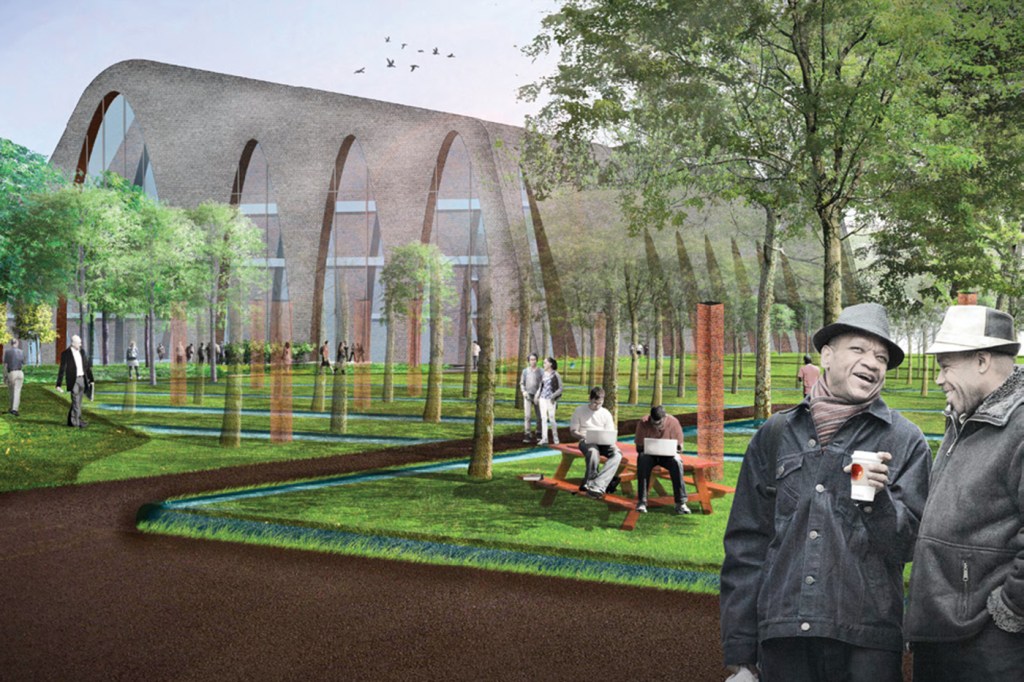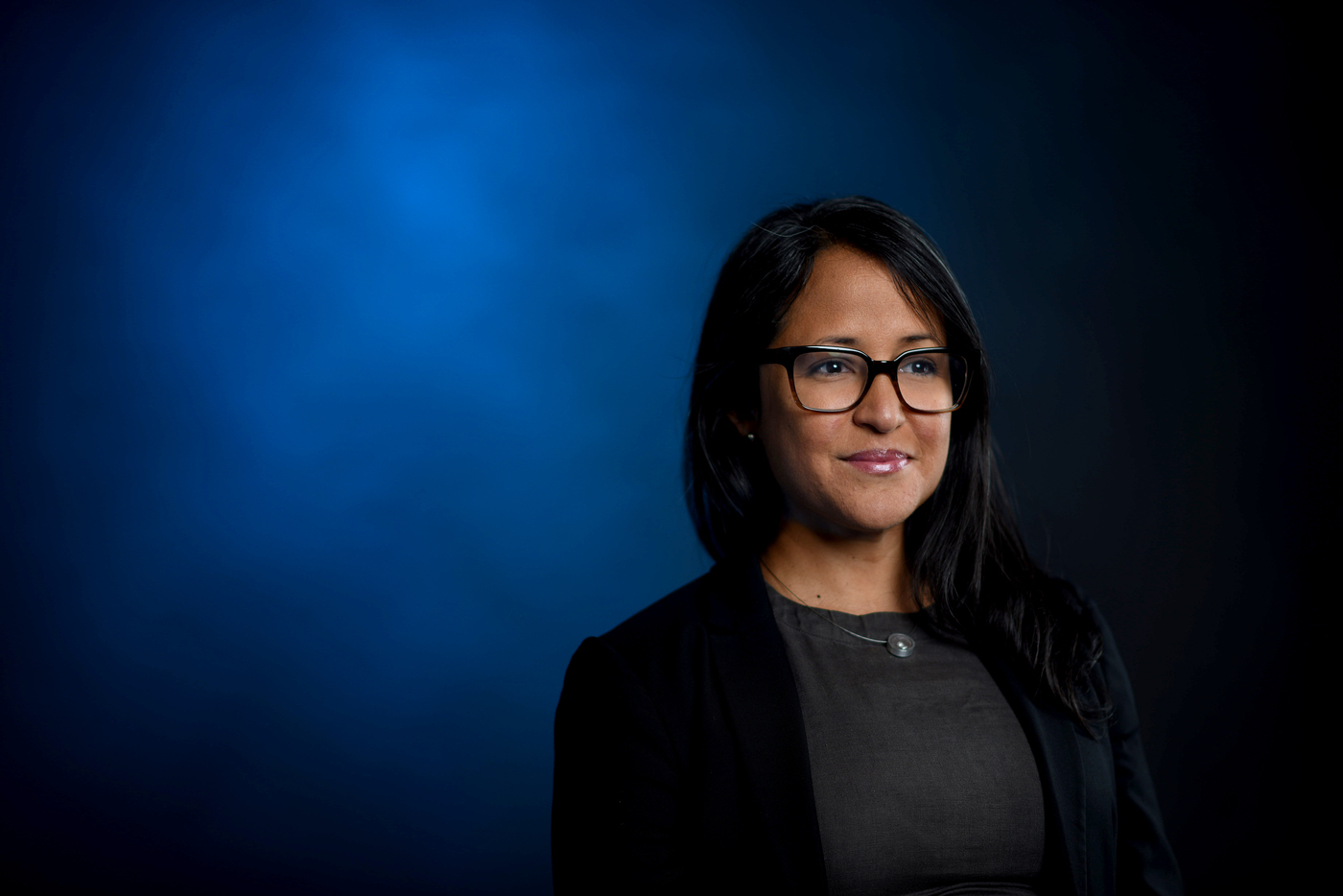How architects can make buildings ‘aware’ and benefit the local environment

Picture a landscape. You’re standing in the middle of it. Now add a building in front of you. What changed?
It’s likely that the spot where you’re standing got a bit warmer as the building breaks the wind flowing through the area and creates pockets of stagnant air, reflects sunlight from its walls, and emits heat generated by its operating systems. It may have also replaced some greenery, but casts some of its own shade.
The building likely also adds some amenities and services that the neighborhood might not have had access to before. Maybe it has a cafe where friends can gather.
There are many ways that infrastructure transforms its immediate surroundings, and that can impact the other inhabitants of a neighborhood, whether they’re plants and animals or humans, says Michelle Laboy, assistant professor of architecture at Northeastern. But during site planning, she says, architects typically look at the climate of the broader region rather than the development’s specific street corner.
Laboy and an interdisciplinary team of Northeastern experts are working to change that.
The team, which also includes Amy Mueller, assistant professor of engineering, Moira Zellner, professor of public policy and urban affairs, and Daniel O’Brien, associate professor of public policy and urban affairs, propose a new process for development that incorporates localized information about how a project will transform its surroundings, taken from a system of sensors and revising the role of community input in development projects.
Their proposal, called Common SENSES (Standards for ENacting Sensor networks for an Equitable Society) has won the Latrobe Prize from the American Institute of Architects College of Fellows, which provides funding for the team to see it to fruition, applying their new process to a real development project in collaboration with the city of Chelsea, Massachusetts.




“People don’t live in a region. People live on that corner. The experience of people is in a small set of places that they go every day,” Mueller says. “And that means that their microcosm of that region is probably very different from any other person you would talk to.”
In an urban environment, when a bunch of buildings are put up, she says, it creates isolated spaces that experience different airflow, temperature, and more. That can trap stagnant, polluted air, and affect public health. It can vary on a small scale, too, she says. One side of a road could experience notably more air pollution than the other, for example.
The idea, says Laboy, is to make buildings “aware” of that localized environment. That way architects can conceive of infrastructure that integrates seamlessly into its surroundings and adds benefits to the local environment, too.
A vital component of the team’s model is deploying environmental sensor networks before and after construction. These sensor networks would measure environmental factors like air temperature, humidity, pollution, groundwater levels, and air and water flows. This would give architects data to leverage green infrastructure methods to minimize a new building’s impact on the local environment—or to mitigate existing environmental challenges like air pollution or flooding.
Sensor networks, however, just provide the environmental data. The people component of the ecosystem needs to be brought into the design phase in a different way, the researchers say.
Development projects typically begin with architects coming up with a design, followed by meetings with residents and other stakeholders to get feedback. The Northeastern team has a new model to encourage local stakeholders to participate in the design process more continually. It includes workshops and conversations with the community, as well as idea generation from the earliest stages of development.
A prototype tool to enable that level of input, Zellner describes, is a digital collaborative whiteboard that allows people to design infrastructure together. It includes a map of the site and surrounding neighborhood that enables people to draw their own infrastructure plans against an underlying simulation that runs scenarios for flooding, heat, and more.
This adds the “lens of what the community cares about,” she says. “The trade-offs become visible and then that can inform the deliberation of what is the solution that we can all live with.”
The team says that winning the Latrobe Prize demonstrates that there is support in the field of architecture to shift toward a different model for developing infrastructure projects.
“The fact that they are recognizing our research and the potential for that research to transform a profession that I care so much about—I can’t overstate how meaningful it is for me,” says Laboy, for whom this is the second time winning the Latrobe Prize. “Their vote of confidence on our project really means a lot.”
O’Brien adds, “The project is a demonstration of what is possible. It could demonstrate the potential impact for an approach that integrates sensor technology with participatory workshops and community conversations to achieve local climate resilience.”
For media inquiries, please contact Marirose Sartoretto at m.sartoretto@northeastern.edu or 617-373-5718.